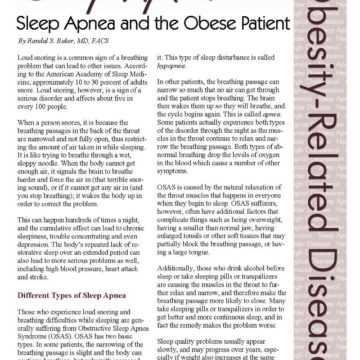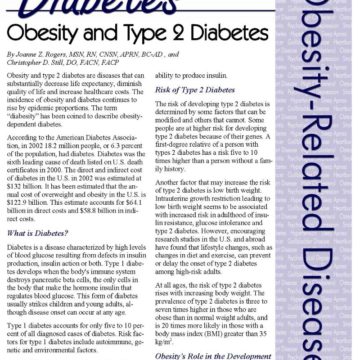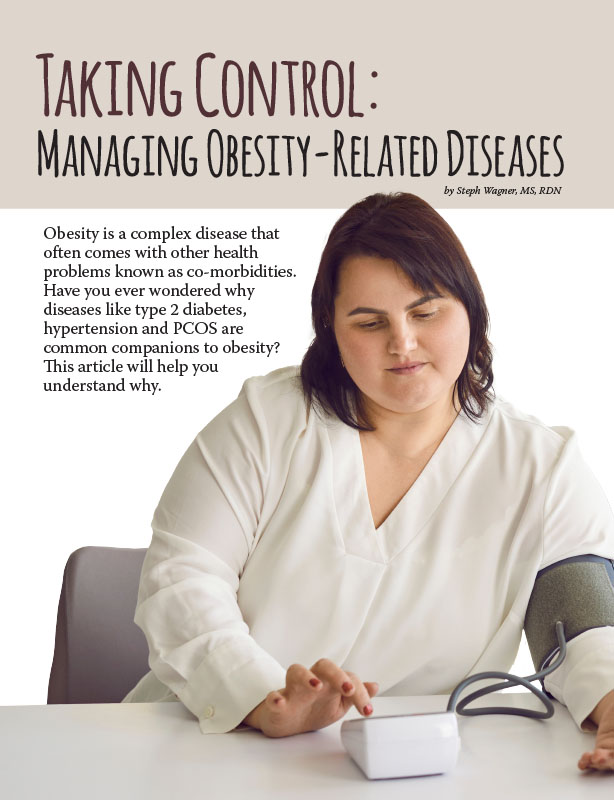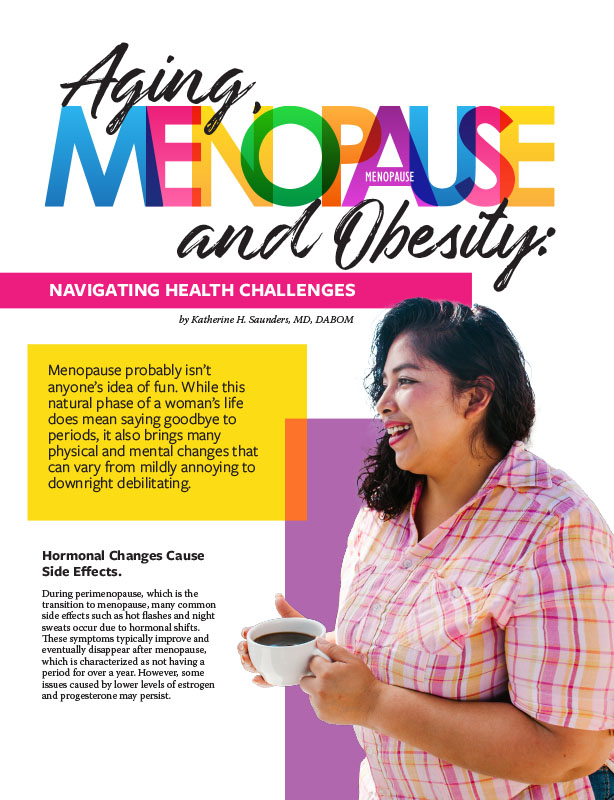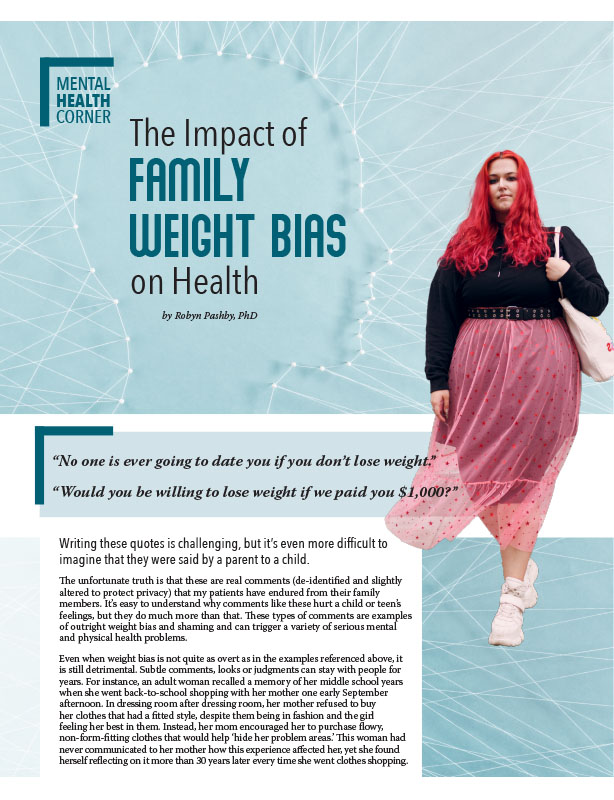Obesity-Related Conditions From A-Z

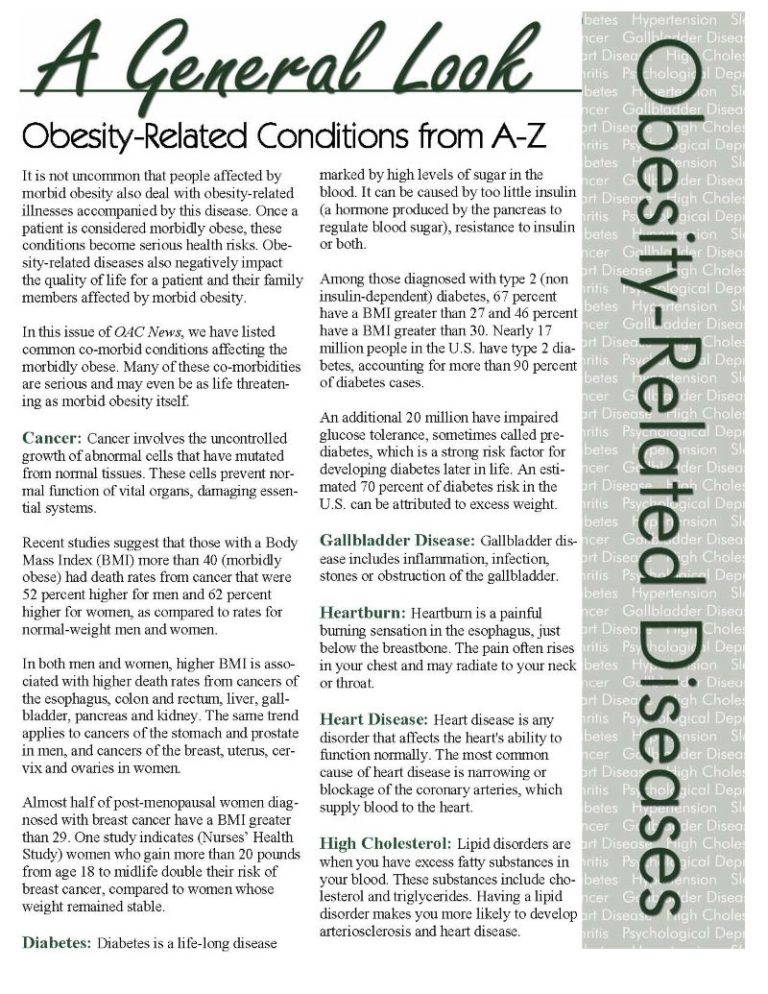
Winter 2006
It is not uncommon that people affected by morbid obesity also deal with obesity-related illnesses accompanied by this disease. Once a patient is considered severely affected by obesity, these conditions become serious health risks. Obesity-related diseases also negatively impact the quality of life for a patient and their family members affected by morbid obesity.
In this issue of OAC News, we have listed common co-morbid conditions affecting individuals with obesity. Many of these co-morbidities are serious and may even be as life threatening as morbid obesity itself.
Cancer: Cancer involves the uncontrolled growth of abnormal cells that have mutated from normal tissues. These cells prevent normal function of vital organs, damaging essential systems.
Recent studies suggest that those with a Body Mass Index (BMI) more than 40 (severely affected by obesity) had death rates from cancer that were 52 percent higher for men and 62 percent higher for women, as compared to rates for normal-weight men and women.
In both men and women, higher BMI is associated with higher death rates from cancers of the esophagus, colon and rectum, liver, gallbladder, pancreas and kidney. The same trend applies to cancers of the stomach and prostate in men, and cancers of the breast, uterus, cervix and ovaries in women.
Almost half of post-menopausal women diagnosed with breast cancer have a BMI greater than 29. One study indicates (Nurses’ Health Study) women who gain more than 20 pounds from age 18 to midlife double their risk of breast cancer, compared to women whose weight remained stable.
Diabetes: Diabetes is a life-long disease marked by high levels of sugar in the blood. It can be caused by too little insulin (a hormone produced by the pancreas to regulate blood sugar), resistance to insulin or both.
Among those diagnosed with type 2 (non insulin-dependent) diabetes, 67 percent have a BMI greater than 27 and 46 percent have a BMI greater than 30. Nearly 17 million people in the U.S. have type 2 diabetes, accounting for more than 90 percent of diabetes cases.
An additional 20 million have impaired glucose tolerance, sometimes called pre-diabetes, which is a strong risk factor for developing diabetes later in life. An estimated 70 percent of diabetes risk in the U.S. can be attributed to excess weight.
Gallbladder Disease: Gallbladder disease includes inflammation, infection, stones or obstruction of the gallbladder.
Heartburn: Heartburn is a painful burning sensation in the esophagus, just below the breastbone. The pain often rises in your chest and may radiate to your neck or throat.
Heart Disease: Heart disease is any disorder that affects the heart’s ability to function normally. The most common cause of heart disease is narrowing or blockage of the coronary arteries, which supply blood to the heart.
High Cholesterol: Lipid disorders are when you have excess fatty substances in your blood. These substances include cholesterol and triglycerides. Having a lipid disorder makes you more likely to develop arteriosclerosis and heart disease.
High Blood Pressure: Blood pressure is measured in millimeters of mercury (mm Hg). Hypertension (high blood pressure) is when your blood pressure frequently goes higher than 140/90 mm Hg.
About one in every five adults in the U.S. has high blood pressure. High blood pressure occurs more often in men than in women. In addition, African Americans are affected almost twice as much as Caucasians. More than 75 percent of hypertension cases are reported to be directly attributed to obesity.
Osteoarthritis: Osteoarthritis is a chronic disease causing deterioration of the joint cartilage (the softer parts of bones which cushion their connections to each other) and the formation of new bone (bone spurs) at the margins of the joints.
Psychological Depression: Depression may be described as feeling sad, blue, unhappy, miserable, or down in the dumps. Most of us feel this way at one time or another for short periods. True clinical depression is a mood disorder in which feelings of sadness, loss, anger, or frustration interfere with everyday life for an extended time.
Sleep Apnea: Sleep apnea is a condition characterized by episodes of stopped breathing during sleep.
Stroke: A stroke occurs when a blood vessel (artery) that supplies blood to the brain bursts or is blocked by a blood clot. Within minutes, the nerve cells in that area of the brain are damaged, and they may die within a few hours. As a result, the part of the body controlled by the damaged section of the brain cannot function properly.
In conclusion, those who are affected by obesity and morbid obesity are encouraged to talk with their physician concerning the co-morbidities listed here. The earlier these are detected, the more advantage a patient may have to keep them under control with the assistance of a physician.
by Steph Wagner, MS, RDN Spring 2024 Obesity is a complex disease that often comes with other…
Read Articleby Katherine H. Saunders, MD, DABOM Spring 2024 Menopause probably isn’t anyone’s idea of fun. While this…
Read Articleby Robyn Pashby, PhD Winter 2024 “No one is ever going to date you if you don’t…
Read Article




